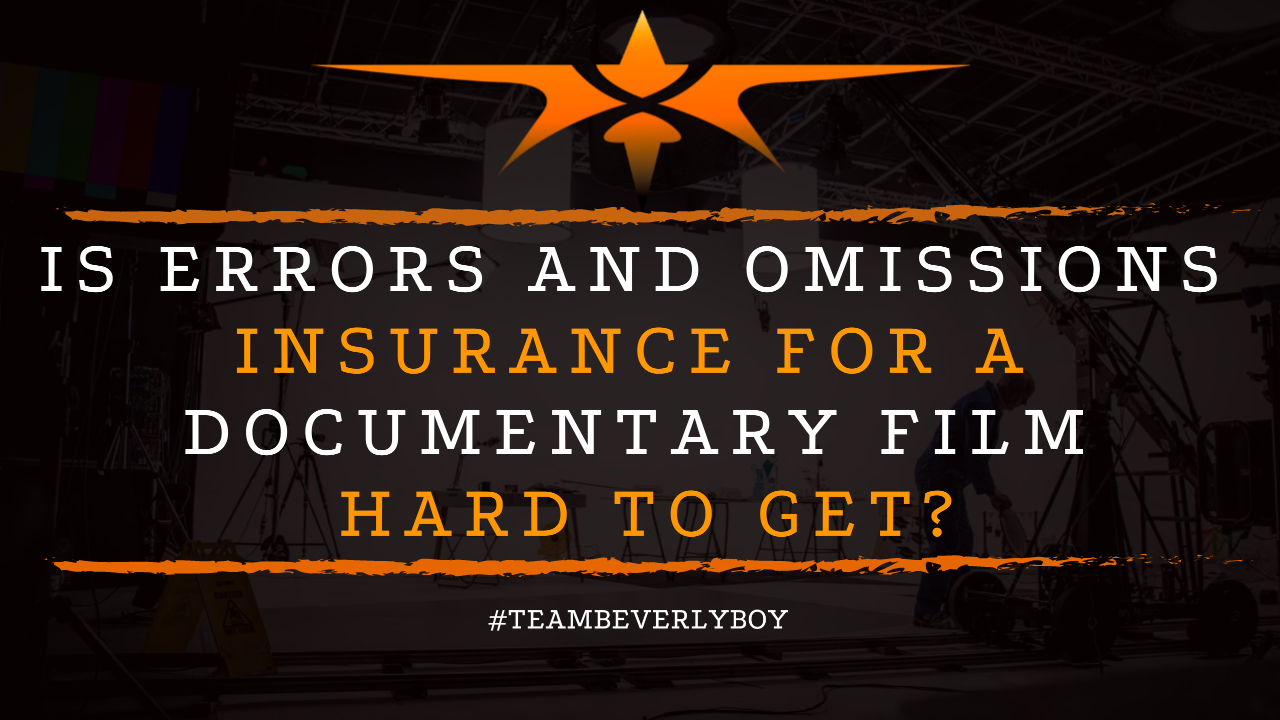
Is Errors and Omissions insurance for a Documentary Film Hard to Get?
Independent filmmakers are frequently shocked when they first see how much errors and omissions insurance costs. And the fact that they have to carry the policy for a period of between 3 and 5 years on average. Even for a documentary film production. Before distributing your film though, it’s a guarantee to have the distributor request proof of errors and omissions coverage. That also names them as the additional insured for your documentary. But is errors and omissions insurance for a documentary film hard to get?

What is Errors and Omissions Insurance?
Errors and omissions insurance covers all of the potential liabilities that may arise should a filmmaker, or those named insured, be sued.
Be it for unauthorized use of copyrighted material, trademark infringement, breach of contract, privacy infringement, defamation, or various other liabilities.
The insurance covers the legal defense against these claims as well as any costs associated with paying out any claims should the filmmaker be responsible. Errors and omissions insurance for a documentary film is a required step in order to land or close a distribution deal.
But it’s surprising to many independent filmmakers when they find out that not only must they carry the insurance? But they often have to pay the costs associated with the coverage despite naming the distributor on the policy as well.
Obtaining E&O Insurance
Getting your E&O insurance policy isn’t hard, but it can be costly and time consuming. As long as you have all of your copyright licenses in place.
And you’ve kept a clean chain of title throughout the process of your production. Then you shouldn’t have too much trouble in securing the insurance coverage that you need.
If you’re wondering if errors and omissions insurance for a documentary film is hard to get. The answer is that it’s not necessarily hard. But it can pose some additional challenges or requirements above and beyond those required for other film types.
Fair Use Protections
Documentary filmmakers often employ fair use protections when they use copyrighted material for the purpose of creating their films. Unfortunately, if you’re using copyrighted material for the purpose of producing your documentary and you don’t have a license?
Then you’re probably going to have to seek additional proof that you have used the material without infringing the copyright. Until you provide a letter of opinion, they may not issue the documentary film’s errors and omissions insurance.
Steps to Acquiring Errors and Omissions Insurance for a Documentary Film
Before you plan distribution of your documentary, make sure that you are ready to undergo the steps necessary to obtain coverage. It’s not difficult, but it is going to take some time.
About a month before you need coverage, you should begin the application process. This way there is adequate time for processing.
Once you’ve applied, you’ll need to have your attorney review the clearances. The application will begin processing and the underwriting will begin right away. Premium negotiations will be likely as this coverage is a costly investment that you’ll want to work out.
Once you secure coverage, you’ll be all set to provide proof of your errors and omissions insurance for a documentary film to your distributor.



